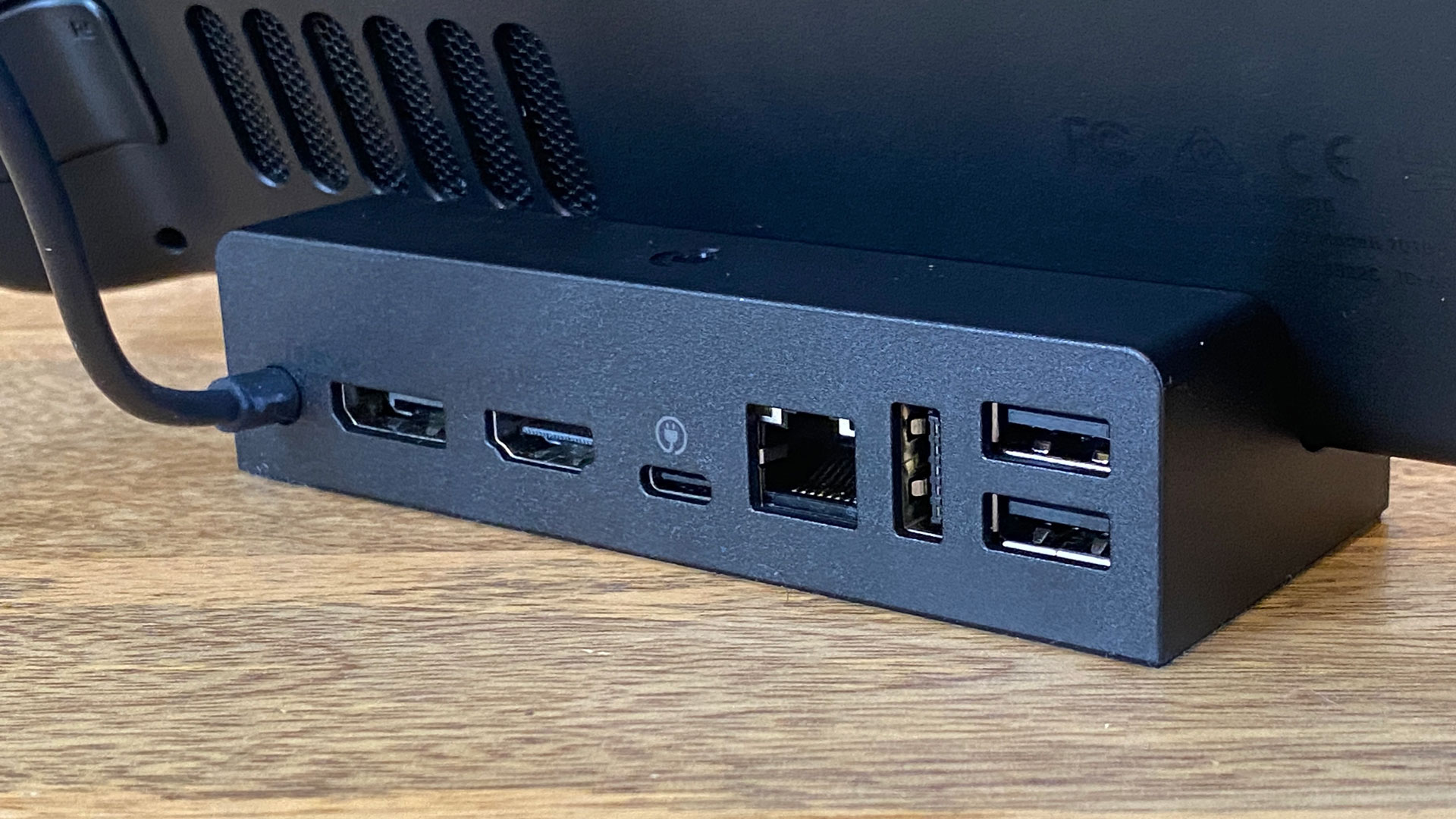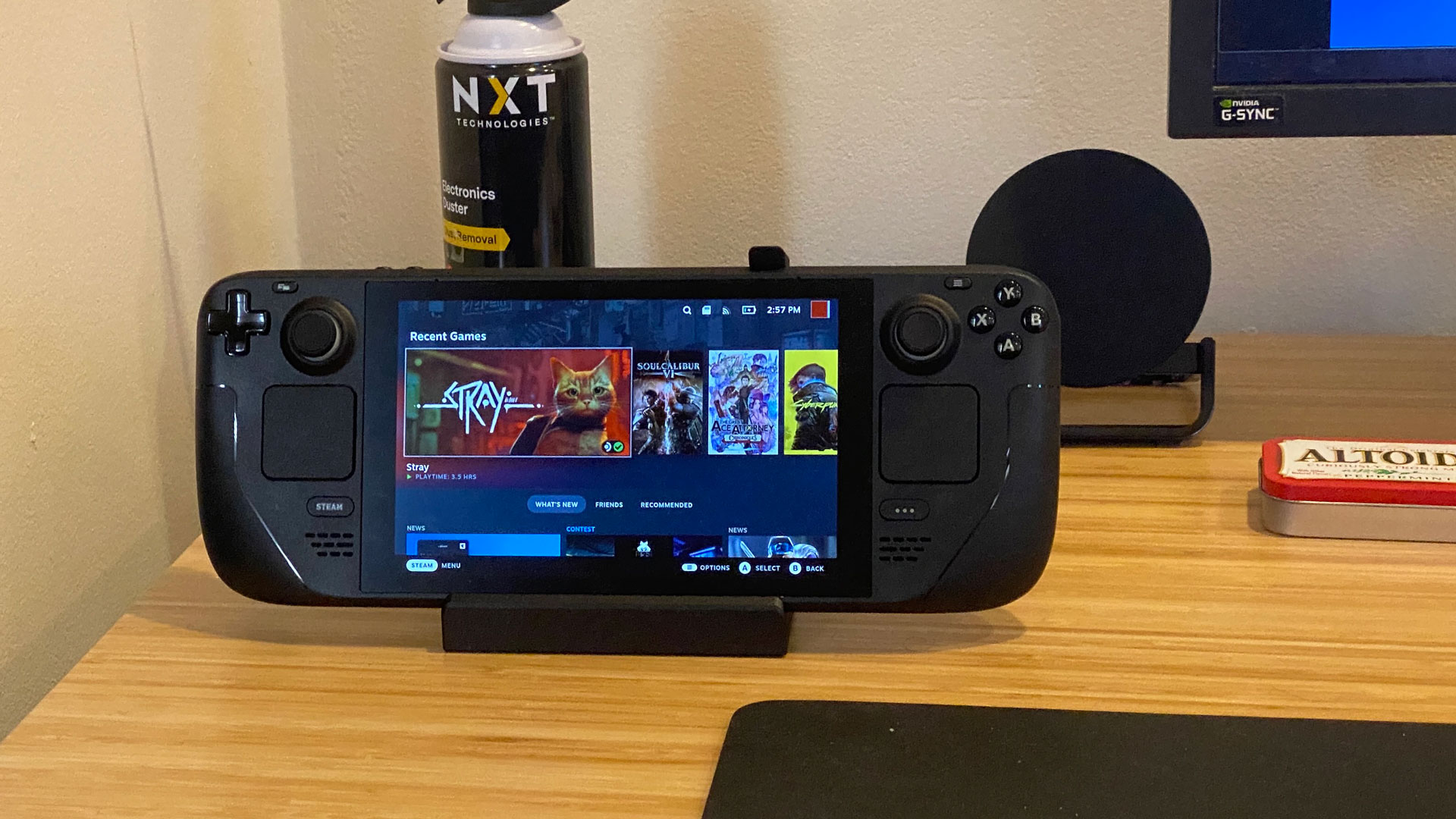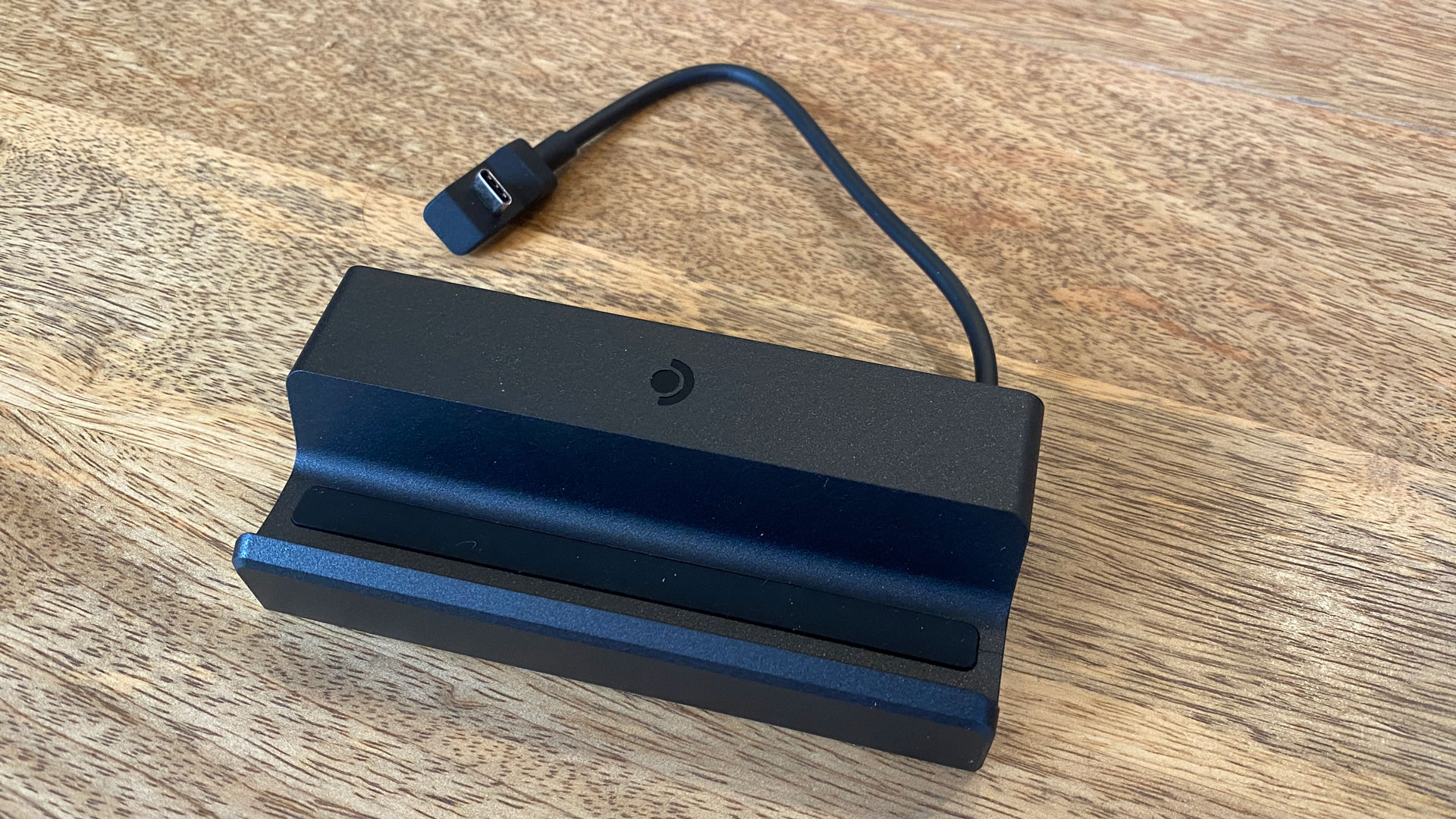Tom's Hardware Verdict
Valve's Steam Deck Dock lets you easily attach peripherals and monitors to your Steam Deck, but it's not a must-have by any means.
Pros
- +
Includes its own 45W charger
- +
Holds Steam Deck up for display or playing with controllers
- +
Looks snazzier than other USB Type-C hubs
Cons
- -
Other USB Type-C hubs are far cheaper
- -
Steam Deck games on monitors are still low resolution
Why you can trust Tom's Hardware
The Steam Deck is a computer, full stop. It lets me take my entire Steam library on the go (or even Epic Games and other launchers, if you want to install Windows on the Steam Deck). But one downside to the Steam Deck is that it lacks expandability.
That's where the Steam Deck Docking Station comes in. It's an $89 dock that falls somewhere between what comes with the Nintendo Switch and what I use to connect a laptop to a monitor. This makes it easier to connect peripherals or attach the Steam Deck to a monitor or TV.
After a brief amount of time trying out the Steam Deck Docking Station, I've found it to be a completely optional accessory, especially if you already have some other powered hub. There are a few use cases where it can boost your experience, but I found it to be something nice, but nowhere near required.
Steam Deck Docking Station Specs
| Ports | 3x USB 3.1 Gen 1 Type-A ports, Ethernet, DisplayPort 1.4, HDMI 2.0 (Up to 4K/60 Hz or 1440p/120 Hz) | Row 0 - Cell 2 |
| Size | 4.5 x 1.99 x 1.14 inches (117 x 50.5 x 29 mm) | Row 1 - Cell 2 |
| Weight | 0.26 pounds (0.12 kg) | Row 2 - Cell 2 |
| Charger | 45 W, included | Row 3 - Cell 2 |
| Price | $89.00 | Row 4 - Cell 2 |
Design of the Steam Deck Docking Station
The Steam Deck is big, but the docking station sure isn't. It's just 4.5 inches wide and takes up very little space on a desk or near a TV. It's far smaller than the Steam Deck that it actually carries.
A small lip holds the Steam Deck up, and unlike the Nintendo Switch, there's no plastic blocking the screen, so you can use it on its own while it's docked. But unlike the Switch, simply placing the Steam Deck in the dock doesn't start charging it or outputting its screen to a monitor; There's a right-angle USB Type-C port with the perfect amount of length to reach the top of the Steam Deck. This cable is not detachable from the dock, so let's hope it doesn't get damaged.



All of the ports are on the back of the dock. The first two, DisplayPort 1.4 and HDMI 2.0, are for video. Next to that is the power connector, which uses an included 45-watt USB-C charger (the same one that comes with the Steam Deck). Next to that, there's a Gigabit Ethernet port, followed by the trio of USB 3.1 Gen 1 Type-A ports for peripherals.
I'm glad Valve included the charger here. That means you can keep a charger with the Steam Deck while on the go, but also have the dock immediately set up and ready to go whenever you get back to it without constantly replacing cables.
Using the Steam Deck Docking Station
Here's the short version: it works. When I plugged in my Keychron Q1, pulled mouse dongles and wired controllers out and tried them, they worked.
Here's the longer version: in most cases, I wouldn't use the Docking Station. For me, it's a very nice place to stick the Steam Deck to charge. But I like using the Steam Deck to curl up on the couch and play games on the build-in controls. I recently finished all of Stray that way.
The Steam Deck's specs are meant for gaming on the go. Its custom AMD Zen 2 "Van Gogh" APU and eight RDNA 2-based compute units are potent enough, but they don't have the specs to blow up these games to a large screen. For me, someone with a gaming desktop, I don't think plugging into a monitor is the best experience. But if this is your only gaming PC, it does work That being said, the dock doesn't add any graphics power to the Steam Deck. Soul Calibur VI, Stray and other games I've been playing on the Steam Deck looked worse when stretched across my 28-inch computer monitor than on the Steam Deck's 7-inch, 1280 x 800 screen.
The monitor aspect actually works better for a totally different aspect of the Steam Deck: the Linux KDE Plasma desktop. Again, I use my own personal computer for browsing the web, writing or working on other projects, but in this case, a bigger screen, with a mouse and keyboard enables the Steam Deck to be a desktop Linux machine
Perhaps the best use of the Steam Deck Docking station is for multiplayer games. The Deck already supports Bluetooth controllers, so you don't need the dock for that. But if you want to play a fighting game (I love some Soul Calibur) with two controllers, either having a TV or having the Steam Deck propped up at all is helpful. The Steam Deck doesn't have a kickstand. For $89, you can hold it up for this purpose. In my initial review, I used a phone stand.

There is a big feature we're still waiting for: FreeSync support, which Valve mentions on its product support page, but is scheduled for an eventual update.
Get Tom's Hardware's best news and in-depth reviews, straight to your inbox.
The Big Alternative
Valve, which makes the Steam Deck, has never been quiet about the fact that other USB-C hubs or docks can work with the Steam Deck. You may already have something in your home that works for the majority of these purposes.
Since the Steam Deck launched, I've been occasionally digging into my drawer for a hub. I've got one powered hub sitting around for such a use case that I typically use to plug into my work laptop, which has just two USB-C ports.
Mine's from some drop-shipped Amazon company with a nonsensical name and was insanely cheap at the time. For a PC dock, which is usually designed for the enterprise or pro users, $89 isn't insane. But I think a lot of Steam Deck users could benefit from grabbing a USB hub with pass-through power delivery (using their included Steam Deck charger) for when they need it.
For instance, this $35 Anker hub with pass-through charging has two USB Type-A ports, a USB Type-C data port, and an HDMI output (though not DisplayPort or Ethernet). This $39 hub from some company I've never heard of has Ethernet and three USB-A ports.
Valve isn't locking you into their dock. If you want everything it gives you, it is there, but there are plenty of other options for people like me, who just want to plug in a USB-A peripheral occasionally.
Bottom Line
The Steam Deck Docking Station is nice to have for certain people. If you want to play on a TV or monitor, resolution or details be damned, it can help, but it's not the only way. If you want to use the Linux desktop or play multiplayer games, it may make more sense.
It works best for people who want it in an entertainment center. The dock has its own power supply and will look snazzy holding up your Steam Deck.
But for those who want to occasionally add a peripheral, getting a USB hub may be a better, or cheaper option. It is for me, and I'm glad Valve has given me the option.

Andrew E. Freedman is a senior editor at Tom's Hardware focusing on laptops, desktops and gaming. He also keeps up with the latest news. A lover of all things gaming and tech, his previous work has shown up in Tom's Guide, Laptop Mag, Kotaku, PCMag and Complex, among others. Follow him on Threads @FreedmanAE and BlueSky @andrewfreedman.net. You can send him tips on Signal: andrewfreedman.01
